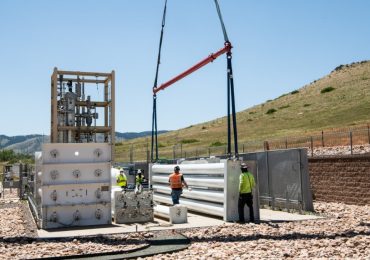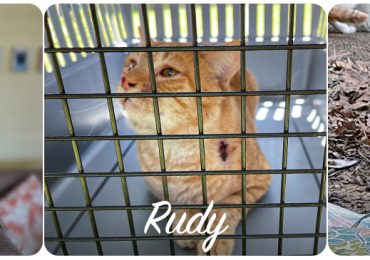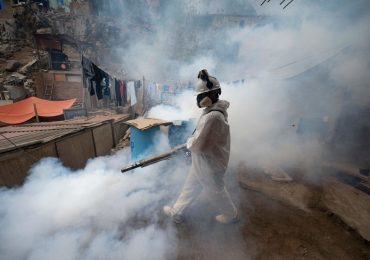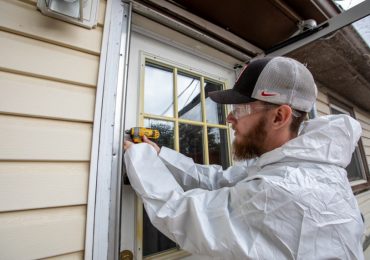Ximena Cibils-Stewart completed her doctoral dissertation at the Hawkesbury Institute for the Environment, Western Sydney University, and works as an adjunct scientist at the Instituto Nacional de Investigación Agropecuaria in Uruguay. During her doctoral research, her primary focus revolved around assessing the impact of silicon supplementation coupled with beneficial symbionts, such as endophytes, on bolstering grass resistance against insect pests. In this blog post, she delves into her latest paper, entitled “Silicon and Epichloë-endophyte defences in a model temperate grass reduce feeding efficiency and immunity of an insect folivore.”
About the paper
Plants employ diverse anti-herbivore mechanisms that curtail feeding and diminish the performance of herbivorous insects. Within the realm of temperate grasses, the utilization of silicon (Si) accumulation and Epichloë-endophytes serves as a dual strategy for physical and chemical defences against insect herbivory. Recent investigations suggest a potential augmentation of Si accumulation by Epichloë-endophytes within their host grasses. However, the implications of this interactions in terms of leaf surface Si-deposition and its subsequent effects on insect herbivore feeding efficiency and immunity against potential infection or parasitism remain unclear.
To fill this knowledge gap, we conducted experiments involving hydroponically grown tall fescue (Festuca arundinacea) with and without Si, in the absence or presence of the novel AR584 Epichloë-strain (Fig. 1). Helicoverpa armigera, a Lepidopteran insect species, was used in both in situ (intact leaves, Fig. 1) and ex situ (excised leaves, Fig. 2) feeding trials to ascertain the impact of Si and endophyte defences on herbivore feeding efficiency, growth rates, and immune responses against potential infection or parasitism (Fig. 3).
Plants hosting endophytes and supplied with Si exhibited remarkable increases of 110% and 143% in leaf silica cell density and leaf Si concentrations, respectively, when subjected to herbivory, in contrast to non-endophytic plants unaffected by herbivores. Despite the endophyte-mediated escalation in Si concentrations, growth rates of H. armigera were predominantly influenced by Si supply, plummeting by 87%. Most indices of feeding efficiency decreased by at least 30%. Moreover, Si supply resulted in a 16% increase in mandibular wear, exhibiting a negative correlation with H. armigera growth rates. The immunity of H. armigera experienced detrimental effects from both Si and endophytes. Notably, this study marks the first observation of Si defences and Epichloë-endophyte derived alkaloids compromising insect immunity via a reduced melanisation response; one of the primary defence mechanisms in arthropods.
Our findings using tall fescue and H. armigera suggest that employing both physical (i.e., Si accumulation) and chemical (i.e., endophytic-alkaloids) defences against insect herbivory may serve as an effective defence strategy, which could be common, but overlooked in temperate grasses. This multi-faceted defence mechanism could potentially pose significant challenges for insect herbivores to overcome.
About the research
Our recent discoveries on how Si and endophytes collectively combat herbivores in two grass species indicate that these natural strategies do not counteract each other. From a practical standpoint, both Si and endophytes could be integrated into pasture management—whether through supplementation of Si-based fertilizers or by introducing new endophytes into cultivated varieties.
Additionally, endophytic alkaloids have been proven to be potent against other insect feeding guilds, such as piercing-sucking aphids, where Si defences alone show minor impacts. This indicates that exploring the interplay between silicon and grass endophytes is crucial when studying the dynamics of plant-herbivore interactions.
Comprehending the protective function of silicon and endophytic-alkaloid defences in grasses against herbivory is pivotal. This understanding holds significance due to the dual importance of grasses as forage crops and the potential to decrease dependence on synthetic insecticides.
About the author
Ximena, originally from Uruguay, has always been captivated by entomology, shaping her professional journey across various continents (USA and Australia) and driving her return to Uruguay. She holds dual B.S. degrees in Biology and Entomology from Iowa State University and an MSc in Entomology from Kansas State University.
During her undergraduate studies, she focused on testing pathogen susceptibility and fitness costs in corn rootworm resistance management. Her MSc research contributed to understanding how prey distribution within plants affects predator communities in winter canola, determining its impact on beneficial insects and pollinators.
As an Associate Scientist in Entomology at INIA (Uruguay’s National Institute of Agricultural Research) since 2014, her focus has been on legume and forage crop breeding programs. Her research centres on exploring the interactions between Epichloë-endophytes and various significant insect pests, as well as integrated pest management of agricultural crops.
Ximena finalized her PhD at the Hawkesbury Institute for the Environment (HIE) at Western Sydney University in Australia in 2021. Her PhD project focused on how silicon, Epichloë-endophytes, and arbuscular mycorrhizal fungi interactions enhance plant resistance against herbivorous pests. Ximena’s ultimate career goal is to comprehend natural plant defences to effectively integrate them into pest management strategies.
Leave a comment









